Western Wyoming Hunting Tips
"Region G & Region H Mule Deer Hunting"
Updated 4/28/2016
Written by Brian Latturner, MonsterMuleys.com
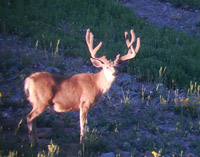 |
In recent years, hunt tags have become increasingly more difficult to draw in these areas because of the increasing publicity and some of the trophy bucks that are harvested and pictures shared on this website, other sites, in magazines and at hunt expos. At the present time, it takes about 5-6 points to draw region G and 1-2 for an H tag. Region G is the better unit, especially for non-resident hunters. Region H has more non-resident tags, and because of the wilderness restrictions, less places for non-residents to hunt.
Yep, wilderness restrictions for those of us from outside of Wyoming. The law came about many years ago in an effort to force non-residents to hunt with a guide, and it's never been changed. Silly, I know, but it is what it is.
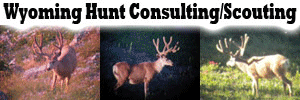 |
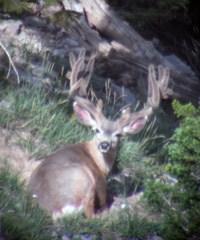 |
Personally, I do the vast majority of my scouting with a backpack on my back, but sometimes I will use horses from Yellowstone Horse Rentals if I take my wife, friend, dad or one of the kids. I'm not a huge fan of dealing with horses, and I like the workout I get backpacking, so I avoid horses when I can.
Once in the high country, I make heavy use of my optics. I glass a canyon, a distant slope, or basin and then move onto the next one. In a single morning, I often look at 3-5 different canyons, basins and distant slopes. My goal when scouting is to look at as many bucks as possible. The more I see, the greater the chance of finally seeing a whopper. So I cover ground, often moving camp every day, looking at a spot for an evening and morning, then on to another location until I find what I'm after.
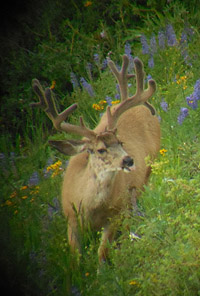 |
Then comes water. I don't know how many times I've ran into guys in the high country who are looking for water. Often they've never been into the Wyoming high country and don't know how scarce water can be in some places. Quite often the nearest water source is 1600 vertical feet and a mile or more below them. So, one must plan on where to get water, how often, etc. I like to try and find a hidden seep or creek that comes out of the ground for a hundred yards or so near the top where I want to camp. Sometimes they can be found, other times not. If not, then you're going to need to pack your water to the top if that's where you want to camp. Or, what most guys do, is camp in the bottoms and hike or ride up in the mornings. I'm not a fan of that. I like to be close to the buck I'm hunting.
Now on to the hunt, and this is where the real mental challenge begins. On opening day, even before daylight, you're almost sure to see flashlights on ridges, hear guys on horses riding by or a horse whinny right out on the ridge you're headed to. Fact is, there are a good number of people who hunt Western Wyoming, but on opening morning you know there's a big one there and you know where he lives, where he likes to feed and where he might hide once he knows people are in the hills. You have the advantage.
This is where the mental challenge comes in......don't let the other hunters running around get you down. Head for your spot, setup where you have already determined would be the best spot and hunt like you would if you had it all to yourself.
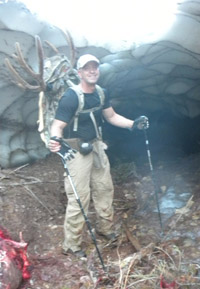 |
But at some point, most older bucks realize there are people in the woods and they bugger off those open slopes and quickly become a new animal altogether.
Hunting those big boys after they've been bumped or smelled the stench of people, can be much harder, but they're not impossible to get. You must keep after it for all the days you can. You also must keep reminding yourself that your buck lives there and he's close by. That mental challenge will test you. Many people give up after just a few days of hunting. They convince themselves that between all the people and the fact they haven't seen their buck, that he must have left the country or been shot. When buggered, they typically don't go very far, usually they just drop down into thick timber and turn into logs. They spend much more time bedded and do as much feeding in the thick timber as possible. Sometimes they have been shot, but never assume it. Them old bucks are good at the game.
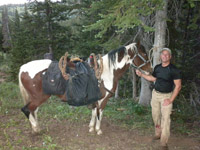 Yellowstone Horse Rentals Western Wyoming Horses |
Once you're several days into your hunt, and your buck hasn't shown himself in the open and maybe your hunt is nearing the end, trying different tactics can be the answer. Drives and still hunting the timber are two methods that many hunters and guides use to dig those bucks out. Drives are popular amongst guides late in a client's hunt. They'll often setup the client in a place where he can take a shot, and then ride or hike across a hillside making a little racket, but not too much. They want to move the bucks, get them to roll around an open slope to another stand of pines, or cut through an avalanche chute where their hunters are waiting. If you're hunting with buddies, this can work. But do it at the end of your hunt, because the more you bump and bugger the bucks, the deeper they'll dive into thick steep stuff and the less likely they are to even feed along the edges of the timber.
Still hunting can also be a good option. Like drives, it requires you to go right into that timber where you think the buck might be. Once you start going in there and taking the chance of being seen or smelled, the more likely you are to send that buck deeper into the timber, so again, use this tactic near the end of the hunt.
I typically like to give it 4-5 days before I start walking through the timber where I think my buck is hiding.
Western Wyoming really is a neat place to hunt, but it can be a tough place to hunt also. After waiting all those years for a tag, be sure to make the most of it and have a good time.
Click-a-Pic ... Details & Bigger Photos
Click-a-Pic ... Details & Bigger Photos
Videos | Hunts & Tags | About Mule Deer | About Elk
Classified Ads | Photo Tours | About this Site | Advertising |
Older Content | Email Us | Privacy Policy
